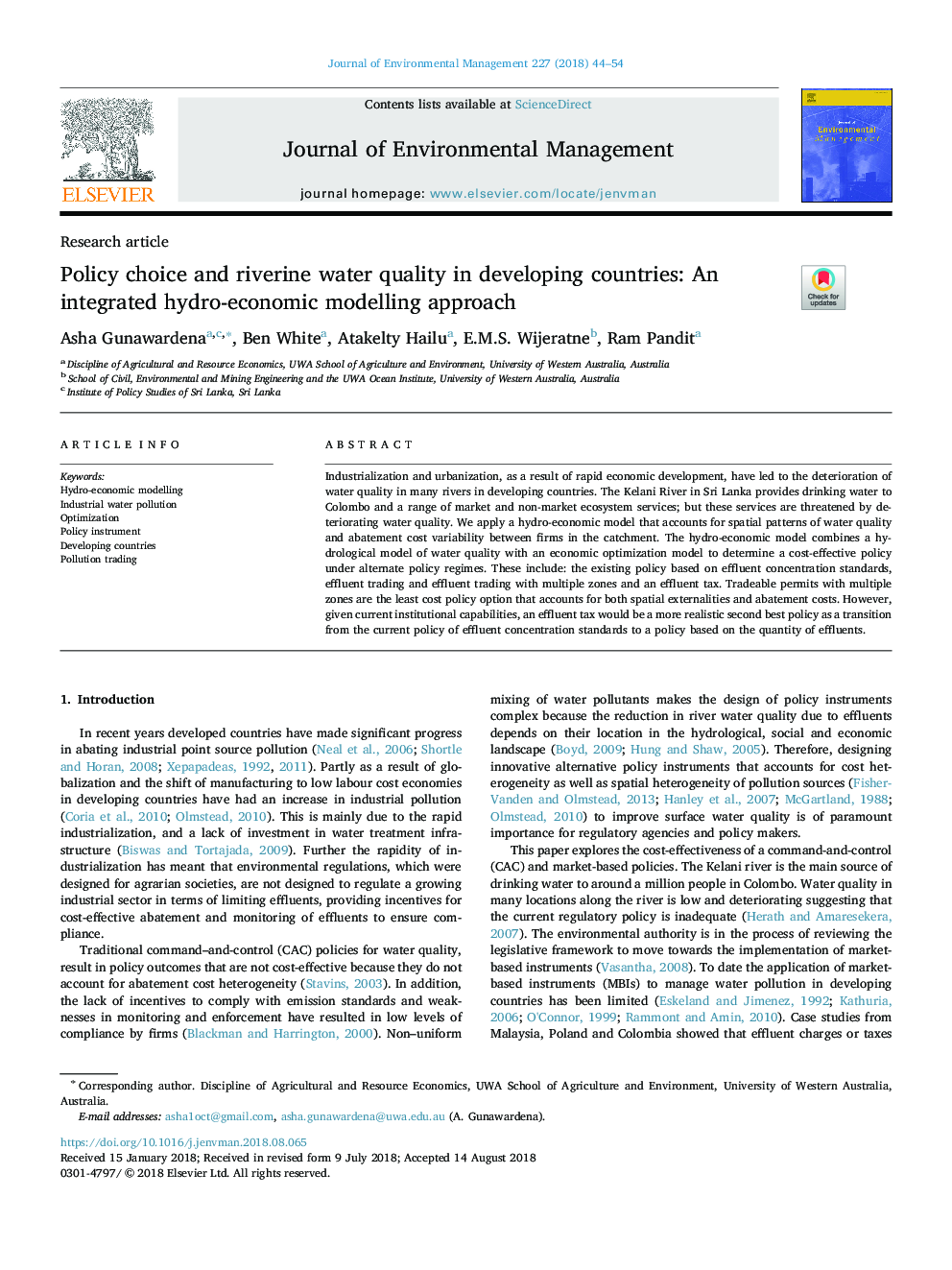| Article ID | Journal | Published Year | Pages | File Type |
|---|---|---|---|---|
| 8954712 | Journal of Environmental Management | 2018 | 11 Pages |
Abstract
Industrialization and urbanization, as a result of rapid economic development, have led to the deterioration of water quality in many rivers in developing countries. The Kelani River in Sri Lanka provides drinking water to Colombo and a range of market and non-market ecosystem services; but these services are threatened by deteriorating water quality. We apply a hydro-economic model that accounts for spatial patterns of water quality and abatement cost variability between firms in the catchment. The hydro-economic model combines a hydrological model of water quality with an economic optimization model to determine a cost-effective policy under alternate policy regimes. These include: the existing policy based on effluent concentration standards, effluent trading and effluent trading with multiple zones and an effluent tax. Tradeable permits with multiple zones are the least cost policy option that accounts for both spatial externalities and abatement costs. However, given current institutional capabilities, an effluent tax would be a more realistic second best policy as a transition from the current policy of effluent concentration standards to a policy based on the quantity of effluents.
Related Topics
Physical Sciences and Engineering
Energy
Renewable Energy, Sustainability and the Environment
Authors
Asha Gunawardena, Ben White, Atakelty Hailu, E.M.S. Wijeratne, Ram Pandit,
